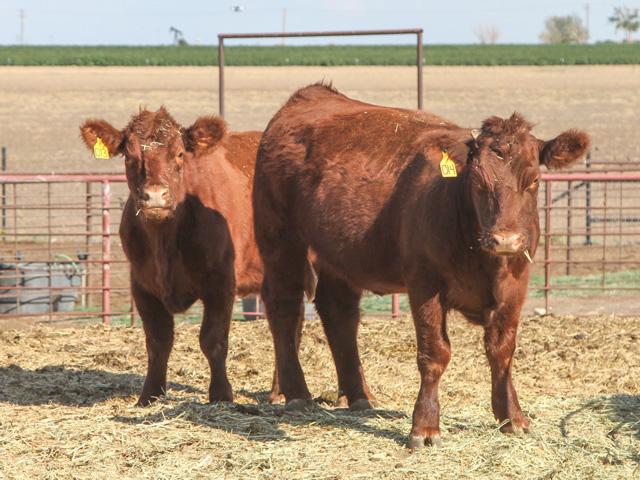Ask the Vet
Keep or Cull a Heifer That Hasn't Bred?
READER QUESTION:
I have a 22-month-old beef heifer, that to my knowledge has never been in heat. I left her with a friend's bull for over 60 days, and still no pregnancy. In a case like this, would estrus synchronization drugs help?
DR. MCMILLAN'S ANSWER:
When I first got out of school, I said fertility may not be heritable, but infertility is! I had only my experience growing up around cattle to base that on at the time, but the heritability of fertility has been and still is being intensively researched. A recent study placed fertility heritability at 0.13 -- a very low number. But given that fertility is a key economic driver for cattle producers, it can't be ignored.
P[L1] D[0x0] M[300x250] OOP[F] ADUNIT[] T[]
My first impression in this case is that the heifer needs to be culled. If you want to continue to try to get her bred, have her examined by a veterinarian who does a lot of reproductive work. There are many issues that could be in play here that need to be evaluated.
Some things to consider would be her body condition score (BCS) and your vaccination protocol. Both over- and under-conditioned cattle are less fertile. Any number of diseases can negatively affect reproduction including leptospirosis, vibriosis, trichomoniasis (trich), infectious bovine rhinotracheitis, bovine viral diarrhea and brucellosis. So, serology and polymerase chain reaction (PCR) testing and cultures may be indicated.
There are also questions about the bull you put this heifer in with for 60 days. Had he passed a breeding soundness evaluation within the last 6 months? Was he possibly infected with a venereal disease like trich? Did anyone see this bull breed other cows while your heifer was in the herd? More specifically, did anyone see the bull breed this specific heifer, and was she in heat? If so, how many times and at what intervals? This heifer could have been cystic during those 60 days and that may have resolved itself. In about half of the cases, females with cystic ovarian disease will spontaneously recover.
These are just some of the ideas that cross my mind, but I go back to my original statement regarding culling her from the herd. If it were me, I would sell her, add some cash to what I got and buy a bred heifer from a reputable breeder that will calf at an appropriate time for your operation. That gives some cash flow in 2017; otherwise, it could be 2018 (or never) before this heifer has a calf you could sell or add back to your herd. That's a long time for you to feed a non-revenue-producing asset.
**
Editor's Note:
Please contact your veterinarian with questions pertaining to the health of your herd or other animals. Every operation is unique, and the information in this column does not pertain to all situations. This is not intended as medical advice but is purely for informational purposes.
Write Dr. Ken McMillan at Ask the Vet, 2204 Lakeshore Dr., Suite 415, Birmingham, AL 35209, or email vet@progressivefarmer.com.
(c) Copyright 2023 DTN, LLC. All rights reserved.





